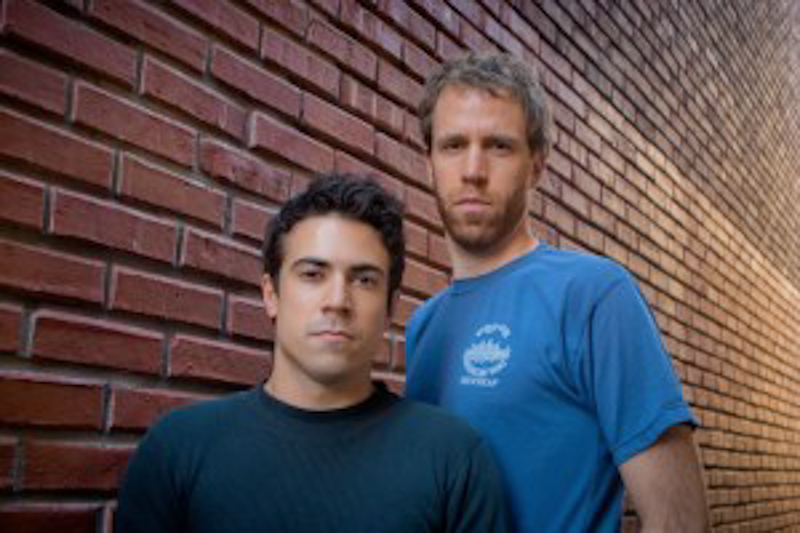The media doomsday prophets tell us print is dead and a new age of journalism will be heralded by a tweet, but Carleton journalism graduate Joel Bernbaum’s new play about homelessness is set to challenge how people understand journalism, he said.
Commissioned by the Belfry Theatre in Victoria, Home is a Beautiful Word will have a live reading at the Spark Festival later this month.
The play uses over 500 taped interviews and transcripts to craft monologues about homeless issues. Word for word, these tapes will become the dialogue in Bernbaum’s play. It will include stories from the homeless and other voices in the community who are affected by homelessness. Bernbaum cast a wide net of sources, talking to people in senior homes, kids in elementary schools, people on the streets, police officers and homeowners.
“It’s letting people quite literally speak for themselves about the issue as oppose to imagining what the issue is,” Bernbaum said.
Verbatim theatre dates back to the 1960s when portable tape recorders were invented. Over 50 years later, Bernbaum approached Carleton journalism professor Dave Tait to supervise his thesis on verbatim theatre as a form of journalism.
Bernbaum said he strongly believes there’s an overlap between journalism and theatre. The only major difference: his production uses actors to portray his sources.
It can be even “richer than traditional journalism” since it doesn’t edit people’s speech, Bernbaum said. One Toronto playwright called these “verbal deliciousnesses” – those “umms” and “likes” in speech that normalize people.
“You are meeting these people in a more genuine way,” Bernbaum said. “It’s more accurate.”
As his supervisor, Tait said Bernbaum opened his eyes to a different kind of journalism.
“Good journalism needs to have the audience experience and witness the things that are being described and not just be told the details about them,” Tait said.
Unlike invasive forms of journalism, like television news, verbatim theatre can recreate the emotion of hearing someone’s story while granting the source anonymity.
“You can make them real in ways that can only be real if you are looking them in the face and hearing their voice,” Tait said. “At the same time, you are able to pull a curtain between the person who said those words and the audience.”
One of the most important things Bernbaum’s thesis did, according to Tait, was map out a criteria that verbatim theatre would need to follow in order to live up to the standards and ethics of journalism.
Although Bernbaum acknowledged art is about not having rules, he felt strongly that verbatim theatre needed to have standards in order to be worthy of the name “journalism.”
“When we are dealing with verbatim theatre we are telling the audience that these are real words,” he said. “We are giving them that guarantee.”
In spirit of that, Bernbaum doesn’t use people’s stories to create composite characters.
Like any new media, verbatim theatre journalism comes with challenges.
Tait said every kind of journalism faces the issue of selection, what gets put in the story and what is left out, but in theatre there’s an added pressure to not lose your audience.
“If you’re writing a magazine article, well, no one notices if a certain percentage of people get three-quarters of the way through and disengage, but if you’re doing a play and you lose the audience it becomes very clear,” Tait said.
It’s a constant challenge to be fair and balanced while simultaneously being entertaining and engaging, Bernbaum said.
Bernbaum said he knew how to accurately and thoroughly get the interviews for the content, but it has taken a team of directors, producers and actors to turn it into theatre.
Presenting theatre as a form of journalism comes with a few raised eyebrows along the way. One old man at the gym told Bernabum that a play with just talking would be boring. Even some of the journalism department was skeptical of his thesis at first, Bernbaum said.
In the face of a tremulous and unsure media landscape, Bernbaum said he hopes verbatim theatre journalism will gain popularity.
Already, the Tricycle Theatre Company in the United Kingdom mounted a verbatim theatre production about the London riots when the government originally refused a public inquiry. The production was based on interviews with politicians, police, teachers, lawyers, community leaders, as well as victims and on-lookers, according to their website.
“That’s very journalistic to me. That reportage is missing, that level of inquiry is missing. We can go deeper if we have the resources,” Bernbaum said.
In the last four years, Canada has seen several verbatim shows.
“Maybe it’s the media landscape changing, maybe as the digital world takes over and our attention spans shrink we need a hit of something different,” he said. “What we have here is the appeal of the real, the appeal of real stories being communicated to us through very real ways.”
New media is riding on that appeal. The importance of real human stories can sometimes be forgotten in newsrooms, but with new media comes a new audience experience. Bernbaum said he hopes to incite a different audience reaction than just reading a news story about homelessness.
“When you consume a piece of traditional media, you see them on television or hear them on the radio,” he said. “With theatre you meet them. In one sense you observe in another sense you feel.”
Bernbaum won’t say how the project has shifted his perception about homelessness, but he said it’s changed his life.
“We so rarely as human beings get a chance to really thoroughly, deeply, genuinely walk in someone else’s shoes, someone who is completely different than us. By doing that time and time again over a year’s worth of interviews, I had my worldview quite shaken. I’m grateful for that.”






